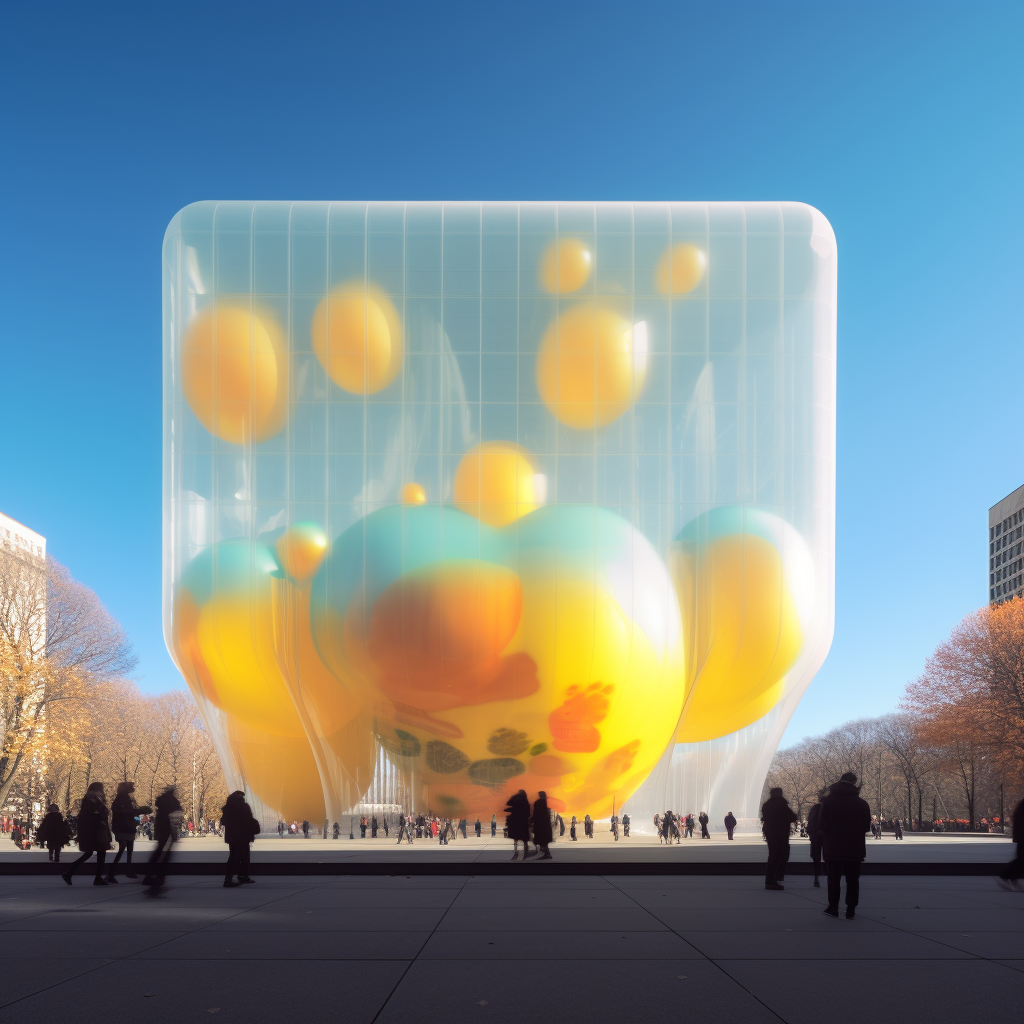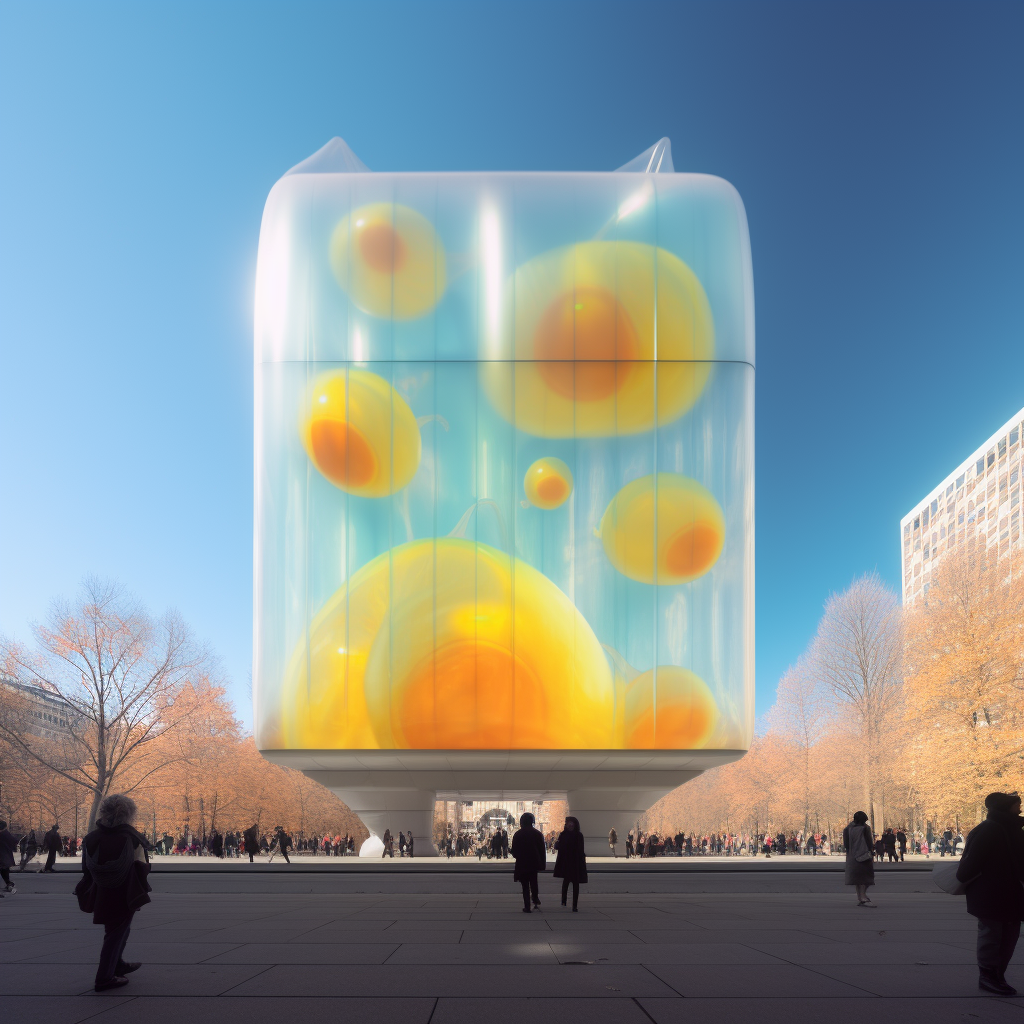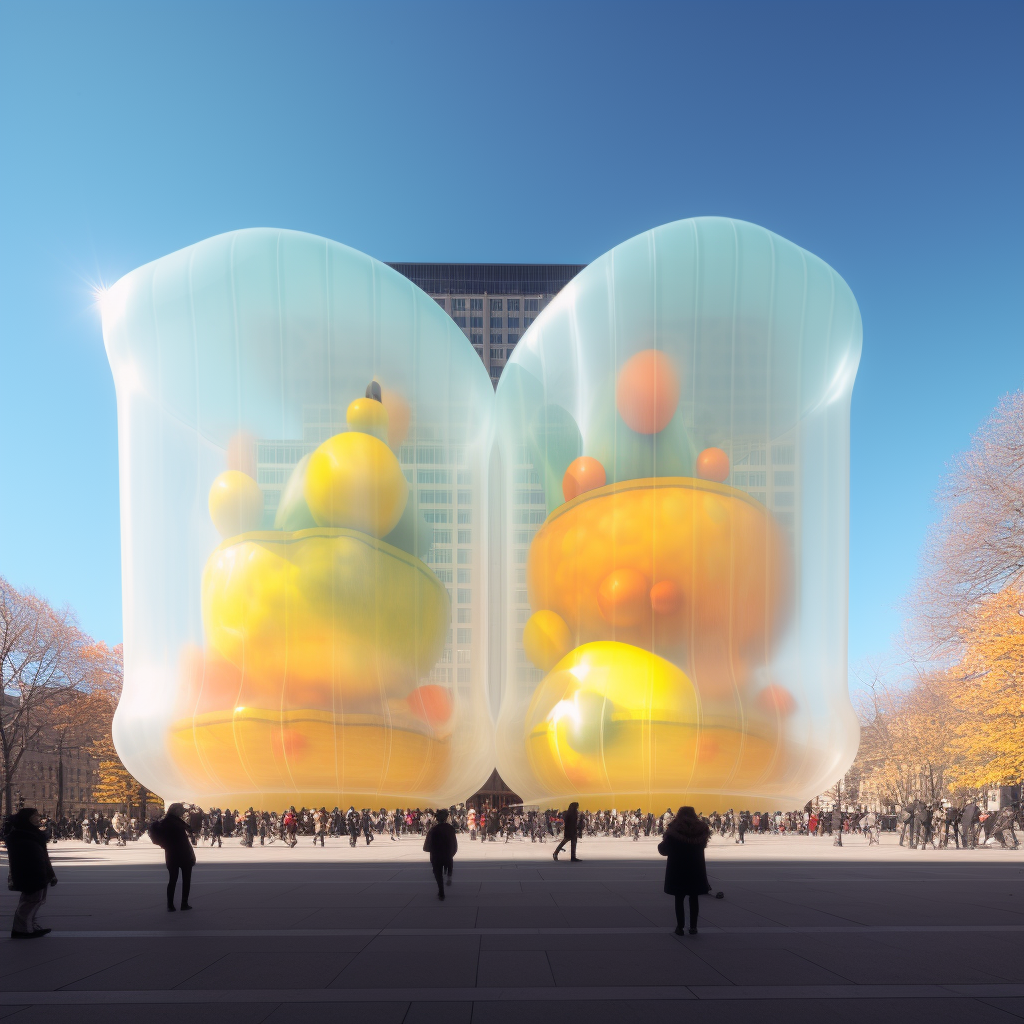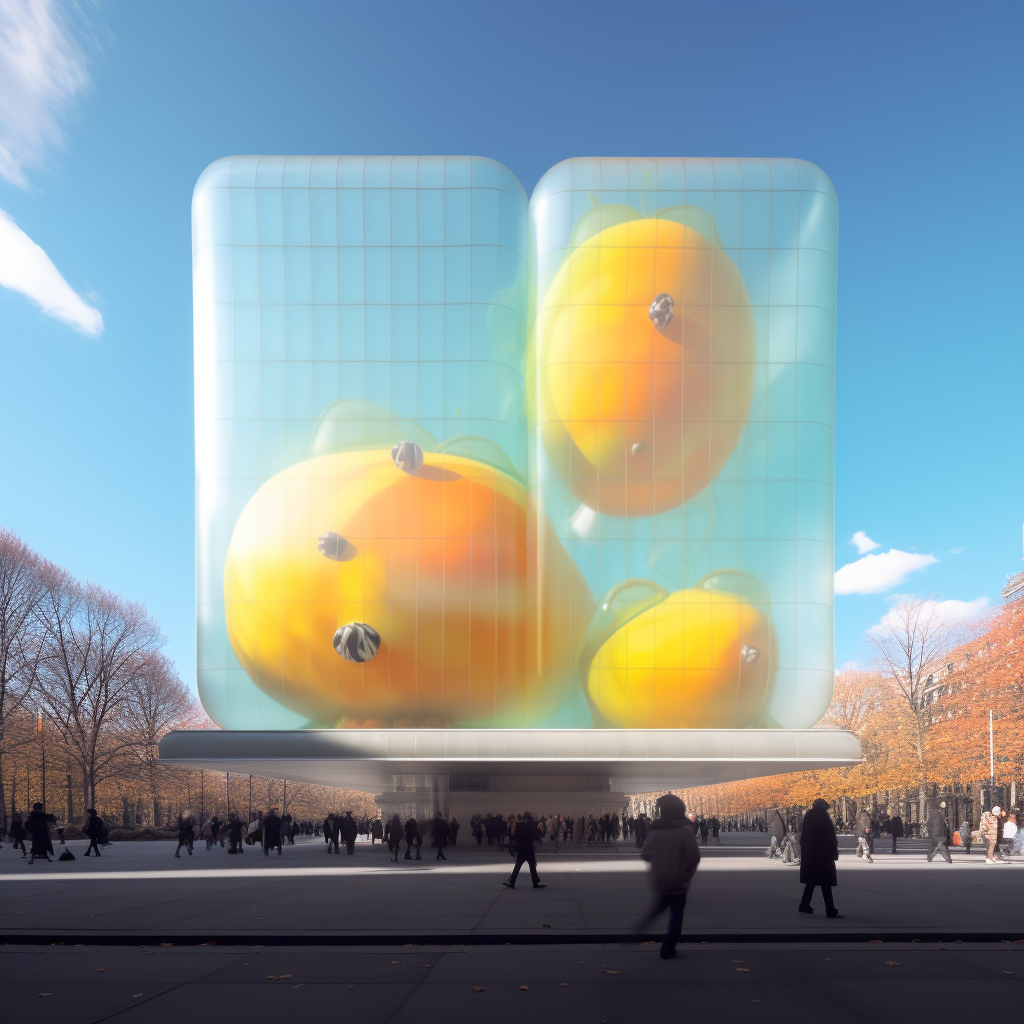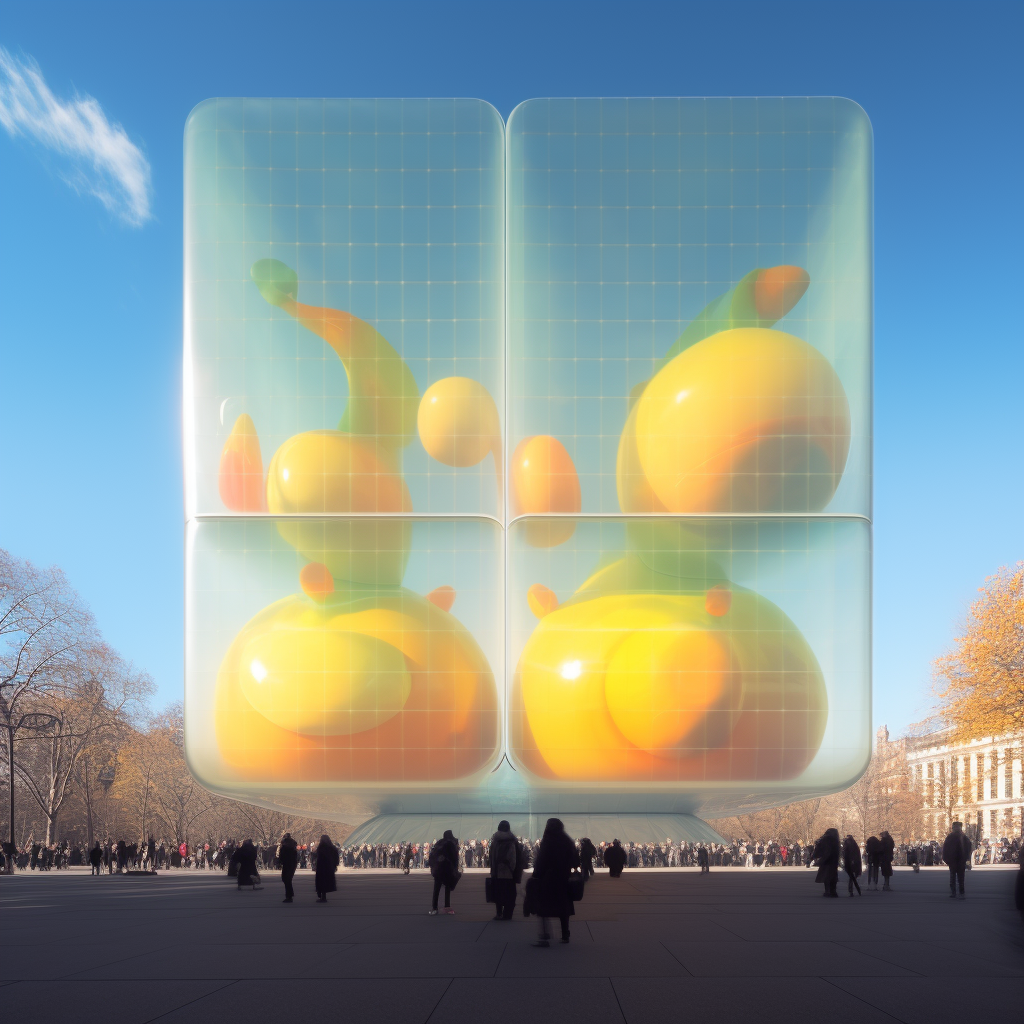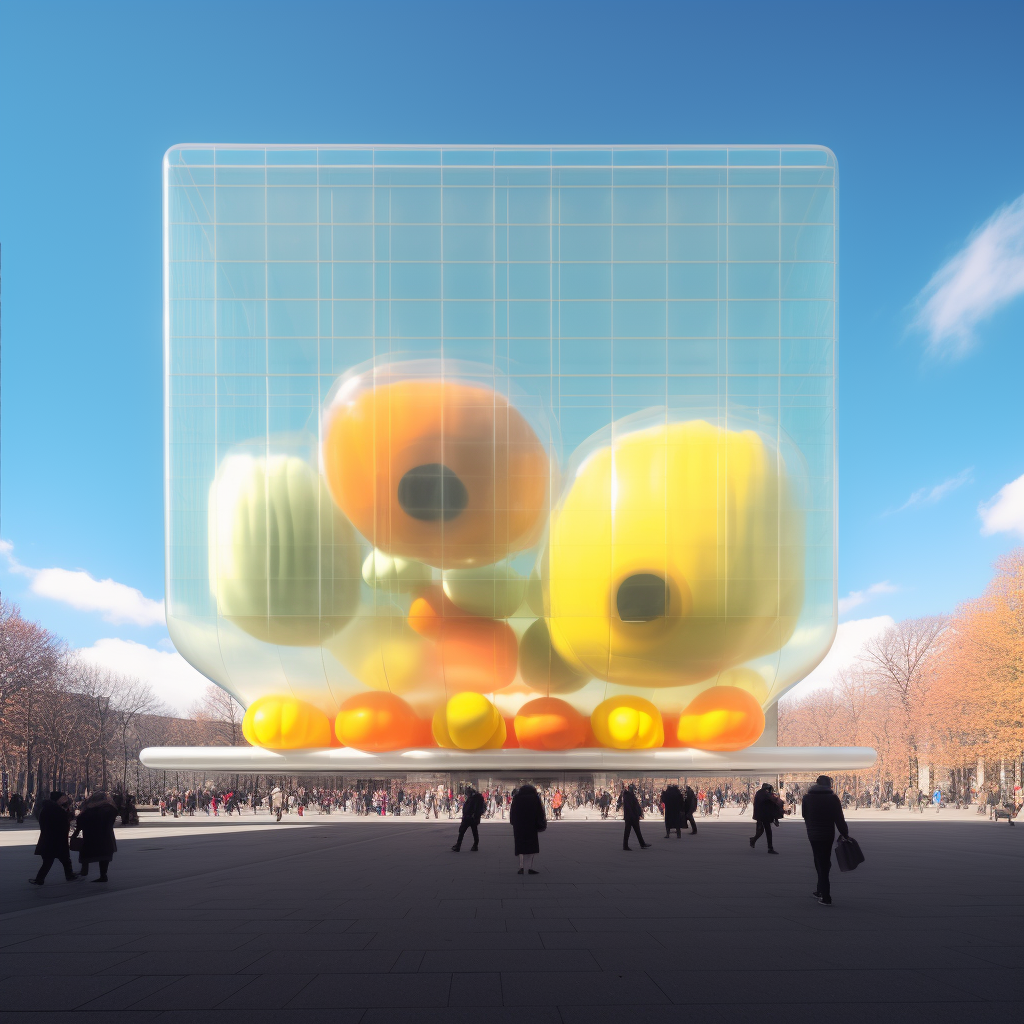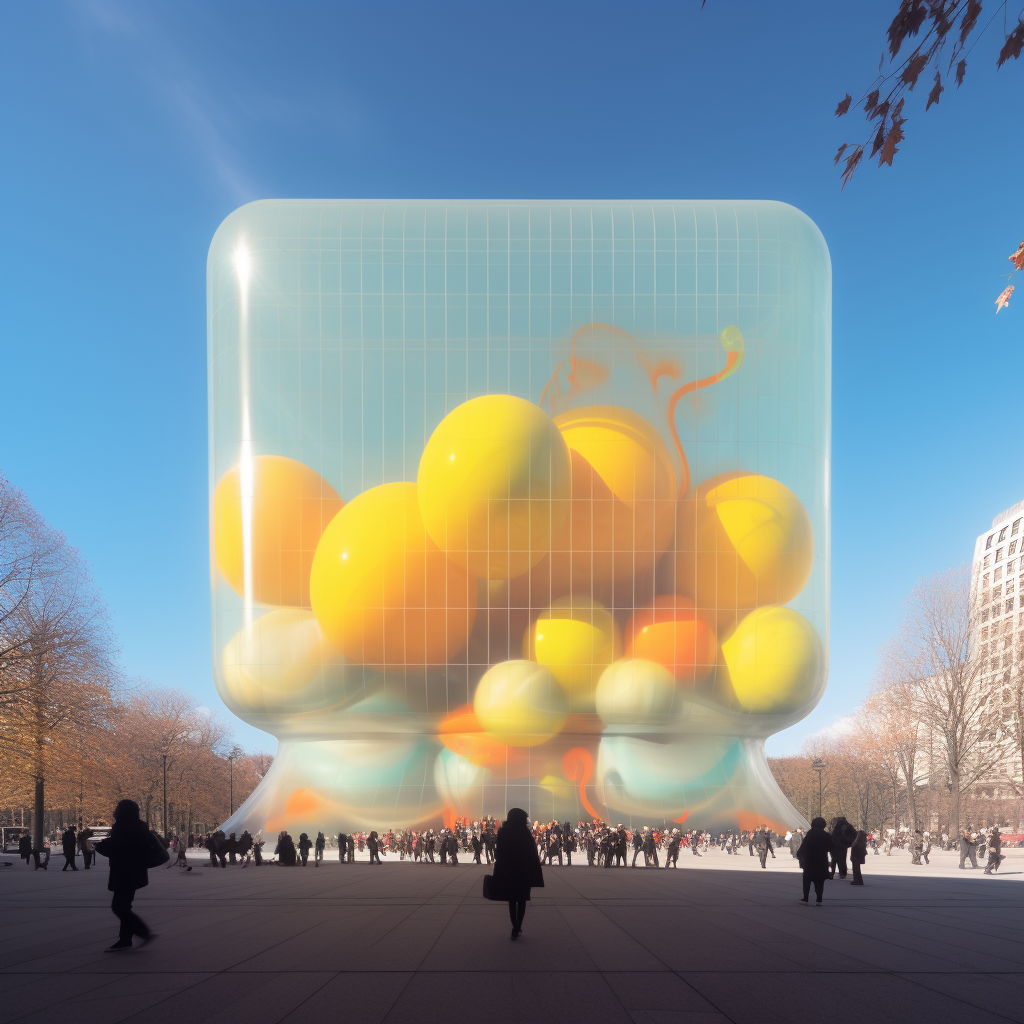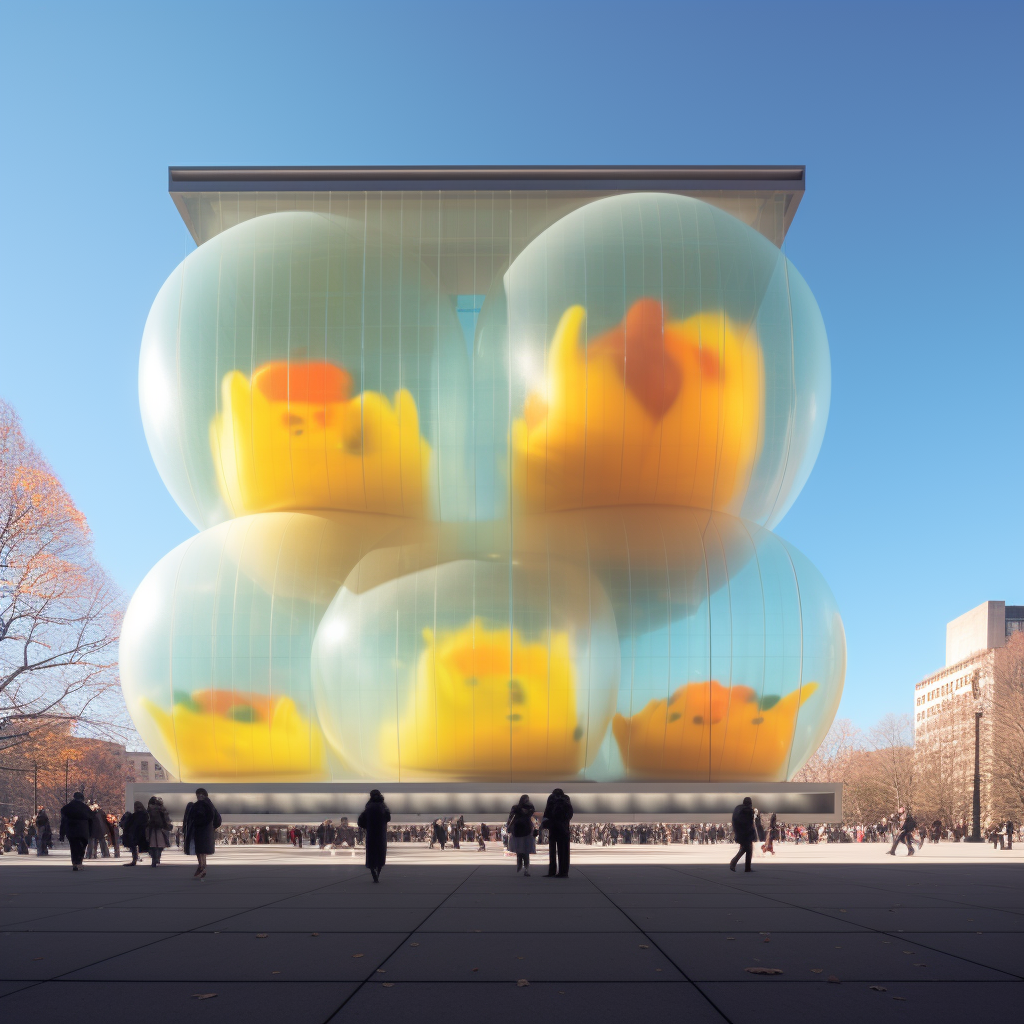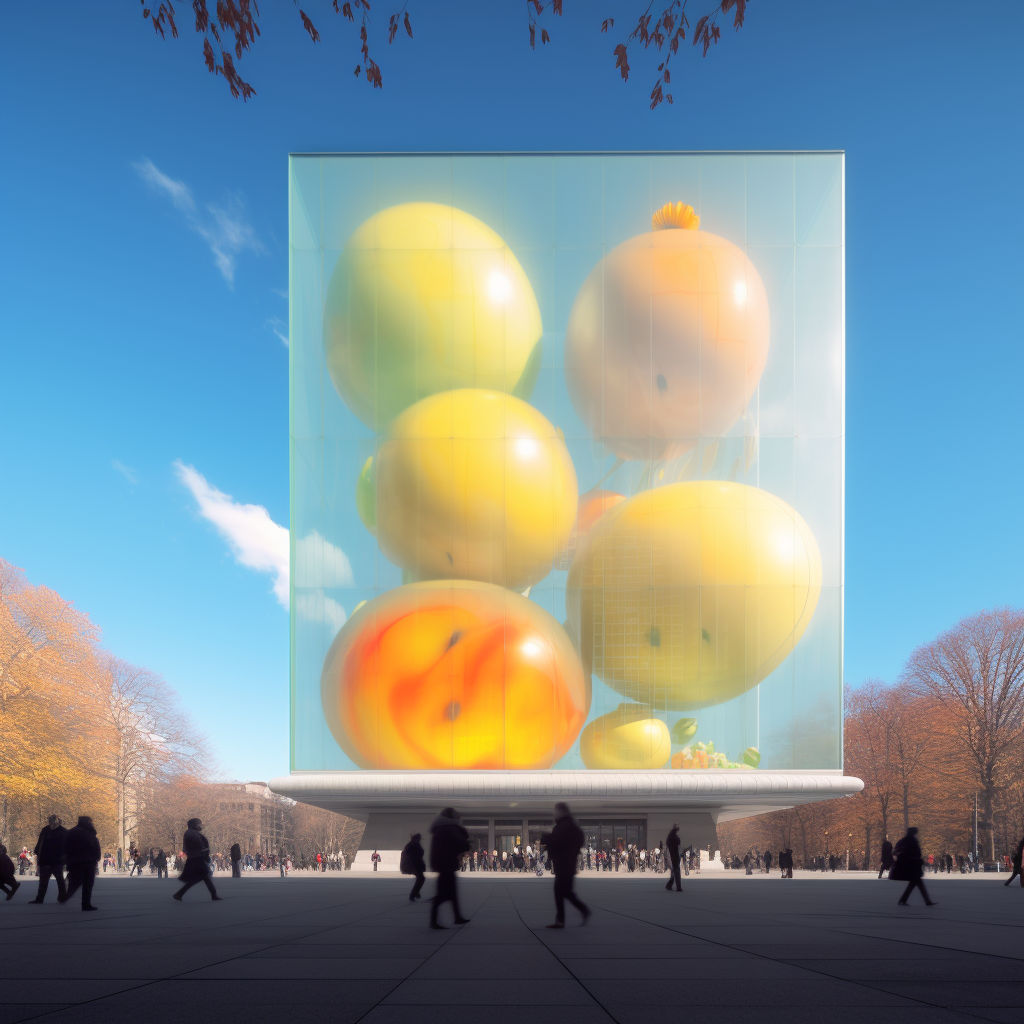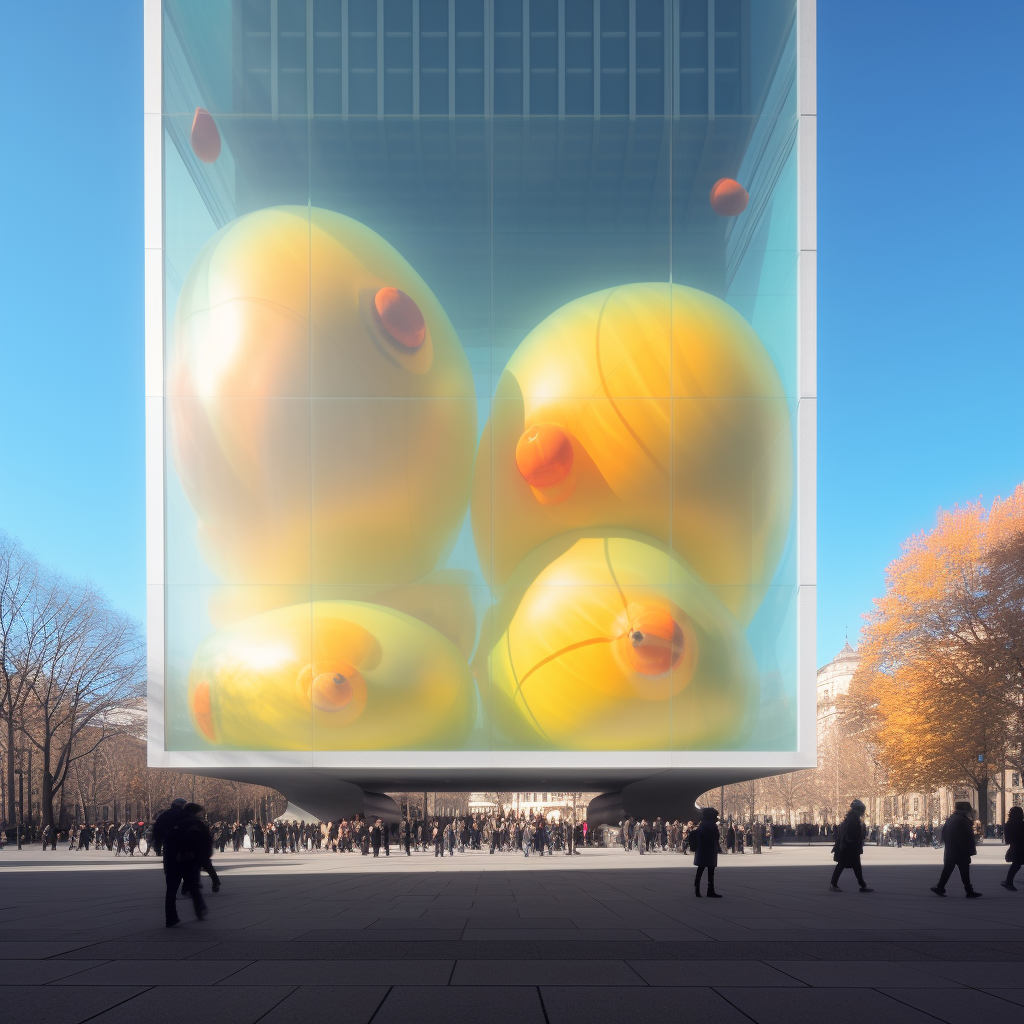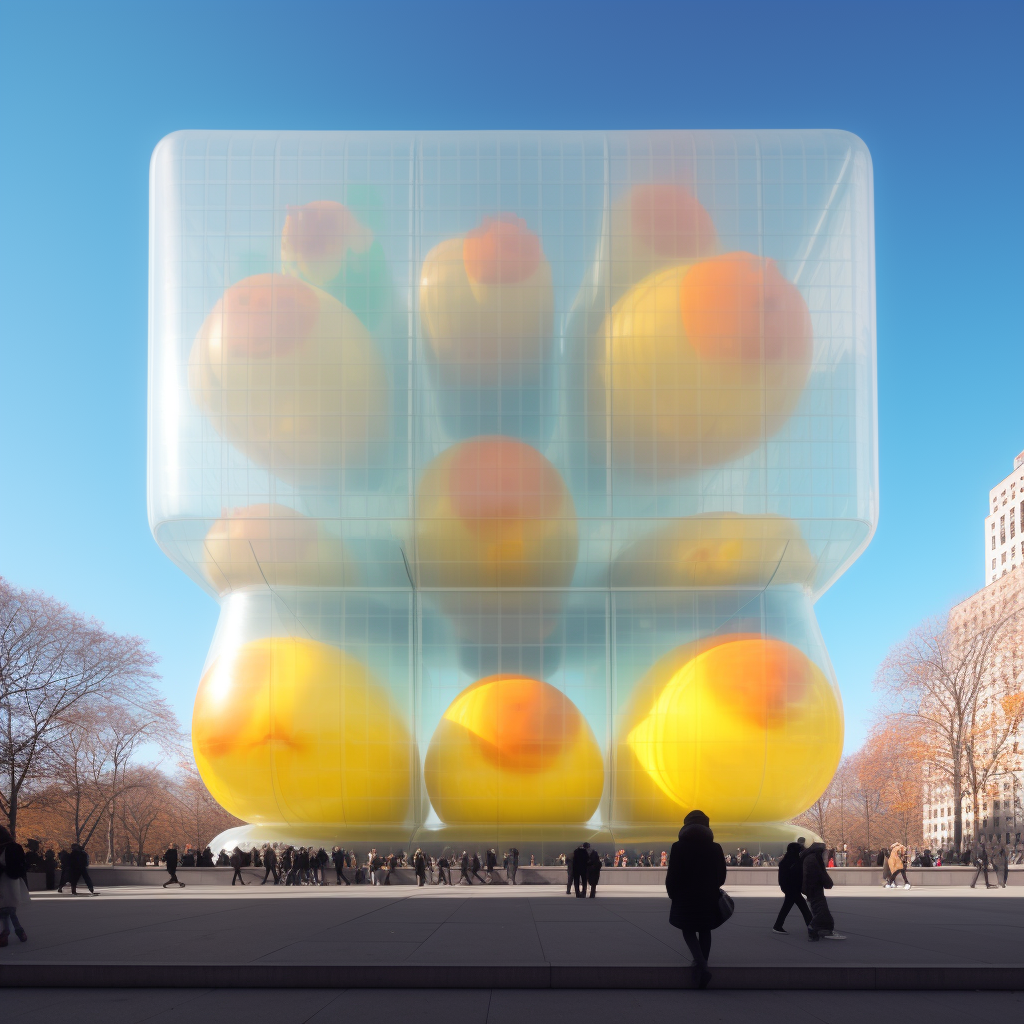BLENDED_MIDJOURNEY_V5.1
I had always been fascinated by architecture, but I knew that the buildings and structures around us often failed to reflect the diversity of the people who inhabit them. As a genderqueer nonbinary person, I wanted to create a space that would represent the LGBTQIA+ community in a way that was both unique and authentic.
That’s when I came up with the idea for the transparent inflatable museum in Paris. It would be a space that was both see-through and fluid, reflecting the diverse and complex identities of the LGBTQIA+ community. The physical materials would be transparent, embedding the idea that architecture should be directly identifiable with the diversity of its citizens.
As I began to work on the project, I encountered resistance and skepticism from those around me. They doubted the feasibility of such a structure, and questioned whether there was a need for a museum dedicated solely to the LGBTQIA+ community.
But I refused to be deterred. I poured my heart and soul into the project, determined to see it through to the end. And when the museum finally opened its doors, it was a triumph beyond my wildest dreams.
People from all over the world flocked to the museum, marveling at its transparent walls and fluid design. They marveled at the exhibits, which celebrated the rich and diverse history of the LGBTQIA+ community. And they left feeling a sense of awe and wonder, recognizing that architecture could indeed reflect the diversity of the people it serves.
As I looked out over the crowds of people, I felt a sense of pride and accomplishment. I had created something truly unique, something that would stand as a testament to the power of inclusivity and diversity in the world of architecture. And I knew that, with this museum, I had helped to shape the future of the field in a way that celebrated all of its citizens, regardless of their gender, sexuality, or identity.
